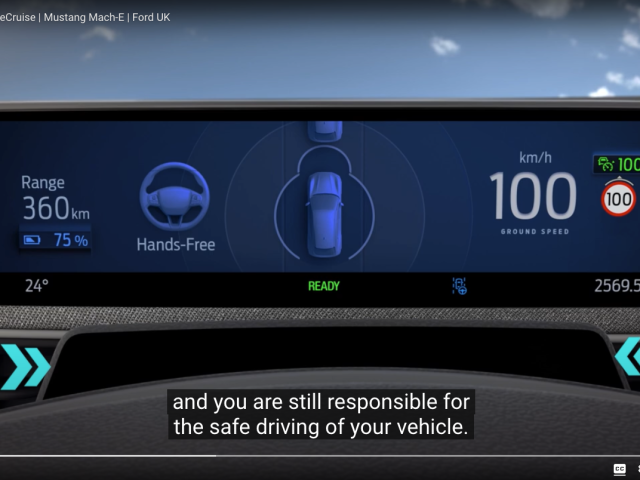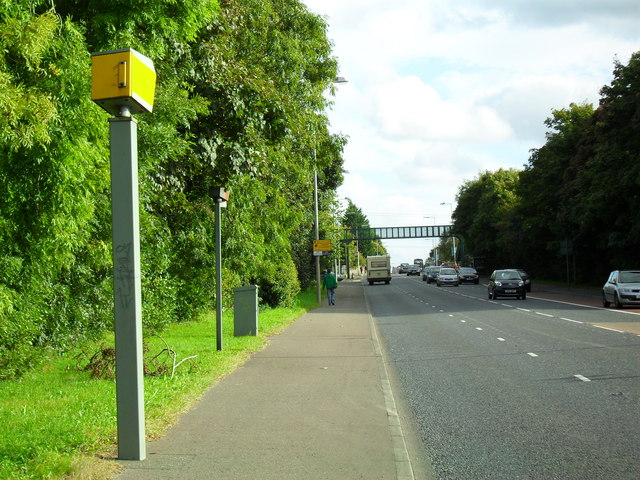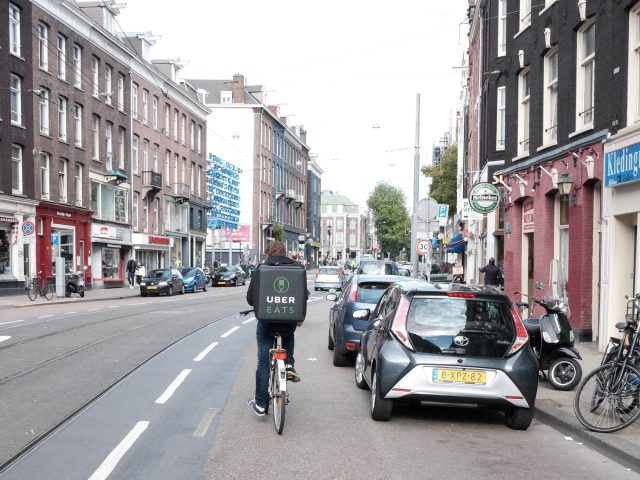
How traffic law enforcement can contribute to safer roads (PIN Flash 31)
Exceeding speed limits, drink or distracted driving and failure to wear a seat belt are still the leading causes of death and serious injury on European roads. Despite legislation designed to prevent all four, many drivers involved in fatal traffic collisions clearly failed to comply with one or more road traffic laws at the time of their collision.
Improvements in traffic law enforcement should be part of an integrated road safety policy and have been shown to lead to rapid reductions in deaths and injuries when applying best practice.
Speeding
Excessive or inappropriate speed is a primary factor in about one third of road deaths and an aggravating factor in many more.
Speed enforcement will remain essential as long as the speed problem is not solved in a structural way by road design, engineering measures and in-vehicle technology.
Efficiency of speeding enforcement is enhanced if the handling of fines for detected violations is largely automated. Efficiency is also higher if the vehicle owner and not the vehicle driver is held liable, since it is easier and faster to identify the owner than the driver.
It is argued that speed enforcement is most appropriate on specific road stretches where collisions are concentrated. Such targeted action brings road safety benefits in the most dangerous road sections and makes it easier to explain the reasons of enforcement to the general public.
In general, there appears to be an overall increase in speed offences detected throughout the EU, mainly due to the extension of safety camera networks, in particular in Central and Eastern European countries.
Out of the 20 countries that could provide data on the number of speeding tickets issued over the period 2010-2015, the number went up in 12 countries, while 8
registered a decrease. The number of speeding tickets has increased on average by 14% annually in Serbia, 10% in Lithuania and Estonia, around 9% in Poland, 8% in Portugal, 6% in Croatia and Denmark. All except two of these countries achieved better–than-average reductions in the number of road deaths over the same period. Serbia and Estonia have also reduced road deaths but not better than the EU average. The annual number of speeding tickets dropped in Sweden, the Netherlands and Finland, countries that have also witnessed some of the biggest slow-downs in reducing road deaths since 2010.
Similarly, the UK and Germany have also seen a big slow-down in reductions of road deaths. In the UK, the number of tickets reduced after 2010 when the new government made cuts that affected enforcement levels; but ticket numbers have started to increase again.
As many as 70% of speeding offenders detected by safety camera do not receive a speeding ticket in Poland and Sweden and 29% of all speeding offenders in France. It is highly possible that other EU countries are facing similar challenges to follow up and sanction automatically-detected violations, but the majority of EU countries are either not collecting the data or not making them public.
Drink driving
While drink driving is relatively infrequent compared to other traffic offences, it is highly dangerous. It is estimated that up to 2% of kilometres travelled in the EU are driven with an illegal Blood Alcohol Concentration but around 25% of all road deaths in the EU are alcohol related. Out of the 14 countries that could provide data over the period 2010-2015, the number of alcohol checks increased in seven countries and seven registered a decrease. The number of alcohol road-side checks grew by 39% each year in Poland, 24% in Estonia and 12% in Portugal. The number of alcohol checks dropped by 13% annually in Sweden, 10% in Cyprus and 5% in England and Wales. Among the countries that could provide up-to-date data, police in Estonia, Poland and
Finland are most active in the fight against drink driving with respectively 677, 466 and 279 driver checks per thousand inhabitants in 2015. The number of checks are also high in Austria (189) and Slovenia (156). The lowest probability of being checked for drink driving is in Lithuania and Romania with less than one hundred in a thousand inhabitants being checked for drink driving per year.
Research has shown that increased drink driving enforcement contributes to a decrease in drink driving deaths and injuries. Increases in the number of checks in 2014 and 2015 in Poland are starting to pay off.
Seat belt use
Despite the legal obligation to wear a seat belt across the EU28, seat belt use in cars in the EU is estimated to be only 90% for front seat and 71% for rear seat passengers in countries that are monitoring wearing rates. ETSC estimates that 900 deaths could have been prevented in 2012 if 99% of occupants had been wearing a seat belt, a rate that could be reached with seat belt reminders (SBR) on all car seats. Seat belt wearing rates are highest in Germany, Sweden, GB and Estonia with 98% passengers in the front seat belting up. Seat belt wearing rates in front seats remain as low as 61% in Croatia, 62% in Italy, 74% in Serbia, 82% in Latvia and 83% in Hungary.
Disparities between countries are even bigger when it comes to wearing seat belts on rear seats: from 98% in Germany and the Czech Republic to only 1% in Croatia. Wearing the seat belt on rear seats is still exceptional in Serbia with 7% rear seat passengers belting up, in Italy (15%) and in Lithuania (33%). The biggest increase in the last five years in rear seat belt wearing rates were recorded in Austria, Estonia, the Czech Republic, Denmark and Sweden. Despite the fact that the proportion of killed vehicle occupants who were not wearing their seat belt is disproportionately high, seat belt enforcement is not a primary target for the police in many EU member states. In some of them, it is still considered a minor violation that may not even be recorded or incorporated in demerit point systems.
The number of tickets for failure to wear a seat belt is highest in Serbia and Romania with 25 and 24 tickets per 1000 inhabitants, followed by Croatia with 23 tickets per 1000 inhabitants and Slovenia with 20 tickets per 1000 inhabitants last year.
Mobile phone use while driving
Distracted driving is a growing problem in road safety. Data on how many collisions involve distraction is poor but experts estimate that it plays a role in 10-30% of them. Studies also suggest that drivers using a mobile phone are approximately four times more likely to be involved in a collision than a driver not using a phone. There is a long list of distractions that undermine the driver’s or the rider’s ability to perform the driving task, but the use of mobile phones while driving appears to be widespread and growing.
Police enforcement, combined with publicity campaigns, has the potential to reduce illegal use of a mobile phone while driving. But even though the phenomenon of using a mobile phone while driving is widespread, enforcement levels remain low. Out of 19 countries that provided data on the number of tickets for illegal use of mobile phone over the period 2010-2015, 8 countries saw an increase and 11 countries saw a decrease in the number of tickets. The number of tickets for illegal use of mobile phones increased by 22% each year on average in Poland over the period 2010-2015, by 17% in Croatia, 12% in Serbia and 8% in Greece. In contrast, ticket numbers have declined over the same period in the Netherlands by 22% on average each year and by 20% in Cyprus.
More work is needed to improve the systematic collection of mobile phone use in collision data to assess the extent and distribution of a growing problem of driver distraction in countries. This will allow prevention efforts to be effectively targeted.
The Cross Border Enforcement Directive: work in progress
According to the European Commission, non-resident drivers account for approximately 5% of road traffic in the EU, but a foreign-registered car is around three times more likely to commit a traffic offence than a domestically-registered one.
The proportion of offences by non-resident road users is difficult to evaluate as only Belgium, France, Hungary, Lithuania, The Netherlands, Poland and Spain have sent data. Offences committed by foreign-registered vehicles represented 13% of all speeding offences detected by safety cameras over the period 2013-2015 in Poland. Differences in the proportion of non-resident drivers depend on the geographical position of the country (i.e. whether or not it is a transit country), the level of tourism in the country and the type of road section (international or local route). As many as 99% of all offences committed by non-resident drivers detected by safety cameras were followed up in Hungary, 96% in the Netherlands and 73% in
France. Only 8% were followed up by the Lithuanian authorities in 2015, 11% in Poland, 35% in Spain and 41% in France.
**Data on drink driving tests from Ireland has been removed from this report. ETSC was informed by the Irish Road Safety Authority (RSA) in March 2017 that these data were not accurate.







